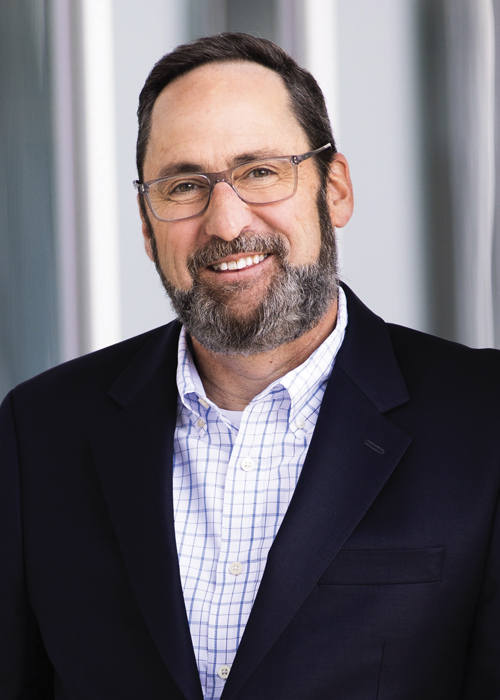Property exposures add to
the usual liability challenges
By Joseph S. Harrington, CPCU
Are we in a mental health crisis if we think we are in a mental crisis? Is it “all in our heads”?
Much has been written and reported of late about how more and more Americans are reporting greater levels of depression, anxiety, loneliness, and thoughts of suicide. Reports consistently estimate that roughly a quarter of Americans suffer from some form of mental condition.
To cite one indication of the trend, the RAND Corporation and Castlight Health reported in 2023 that use of mental health services under employer-paid health plans increased by 39% from 2020 to 2022; mental health expenditures by those plans increased 53% over the same period.
It comes as no surprise then that The Pew Charitable Trusts, citing a survey by CNN and the Kaiser Family Foundation, reports that “90% of Americans feel we are in a mental health crisis.” (emphasis added)
Whether this crisis is objective or subjective—or both, growing awareness and treatment of mental conditions will have an impact on liability lines of insurance for almost all classes of business. While most jurisdictions require that mental anguish must arise from a physical injury to be covered under an auto or general liability policy, some do not. Either way, claims costs related to mental health are certain to grow.
Among the classes of business most greatly affected by the growth in mental health treatment and costs are the nonprofit organizations and social service agencies that deal directly with vulnerable, at-risk populations—both before and after they’ve experienced trauma.
“We’ve seen numerous large claims where the root cause was inadequate staffing affecting quality of care or oversight.”
—Kristina Talkowski
Senior Vice President for Middle Market Commercial Business
Nationwide

Awareness
Concern for mental health grew steadily for years before attaining the high level it has in recent years, according to Paul Siragusa, senior vice president of underwriting for human services at Philadelphia Insurance Companies. “There is greater awareness of the prevalence of mental health disorders, and of the need for services from both for-profit and nonprofit providers,” he says.
“For years, we’ve noticed a growing overlap between services for mental health services, substance abuse treatment, and services for people with intellectual and developmental disabilities,” Siragusa adds.
“As a result, many of the social service organizations we interact with have a good deal of experience in mental health, even if it’s not their primary focus,” he notes. “I expect that increased awareness of the U.S. mental health crisis will result in additional funding for social service providers.”
“There is definitely more awareness about mental health,” says Kristina Talkowski, senior vice president for middle market commercial business at Nationwide. “Suicide claims are occurring with higher frequency, while growing problems with substance abuse and mental health are closely related.
“This is a tough segment of business to underwrite,” she adds. “It is important to involve risk management experts upfront to ensure an organization is staffed appropriately to manage the severity of its exposures.” Among the “little to no cost” measures Talkowski suggests are proper in-take procedures, conflict de-escalation training, and “robust” abuse prevention programs.
Even with such measures in place, nonprofits and social service agencies are challenged to address employee turnover in a historically tight labor market.
“With more turnover there is a greater likelihood an organization may miss a step in the hiring process,” she says. “This can result in hiring an employee who is not suitable for a role. It leads to running operations with insufficient staff.
“We’ve seen numerous large claims where the root cause was inadequate staffing affecting quality of care or oversight. Business auto, professional liability, and abuse coverages are particularly affected by staffing issues.”
Firm market
The heightened concern for mental health comes at a time when the market for insurance for nonprofits and social services is “quite firm,” according to Talkowski. “Carriers are charging more across most lines of business and underwriting with more scrutiny than in years past.
“Litigation abuse and jurisdictional concerns are exacerbating the situation,” she adds. “This is causing some carriers to retreat from the market, reduce limits, increase underwriting standards, and/or increase their expectations for controls to be in place.” Talkowski notes that there have been “reductions or eliminations of umbrella limits, particularly for abuse, professional liability, and auto liability coverage.”
As a result, she explains, “more segments of business are shifting to the excess and surplus lines (E&S) market. This gives carriers greater flexibility to charge for specific exposures, limit coverage in a more targeted fashion, and cover defense costs within the basic policy limit.”
Siragusa sees much the same. “Capacity remains scarce both in the primary and reinsurance markets,” he says. “High single-digit to low double-digit rate increases are the norm, combined with a broader application of deductibles and exclusions for higher hazard exposures.”
Property drag
The challenges of writing liability insurance for nonprofits and social services are old news, for the most part. What makes today’s market challenging in a new way is the growing cost of property coverage.
“Historically, property coverage was one of the most profitable lines of business in the social service insurance sector,” says Siragusa. “This has changed over the last several years as a result of severe weather events, rising construction costs, and widespread undervaluation of buildings and personal property.
“High single-digit to low double-digit rate increases are the norm, combined with a broader application of deductibles and exclusions for higher hazard exposures.”
—Paul Siragusa
Senior Vice President of Underwriting for Human Services
Philadelphia Insurance Companies

“Today, nonprofits face large increases for property premium due to adjustments to building values and carrier rate increases,” he says. “In states prone to severe convective storms, the property insurance market has experienced intense contraction. After several years of poor results and billions in losses, coverage for certain perils, such as wind and water damage, is difficult to come by in those areas.”

For its part in addressing property insurance challenges, Philadelphia Insurance Companies is embracing sensor technology to monitor and mitigate hazards.
“We provide policyholders with water and temperature sensing devices at no cost,” Siragusa says. “Our clients receive real-time alerts if a sensor detects water or freezing temperatures.
The program has helped many policyholders avoid major water damage, and costly repairs, and disruption of their daily operations,” he explains.
Advice for producers
For retail agents and brokers seeking to make the most of today’s market for nonprofits and social services, Talkowski recommends that they rely on insurers with a demonstrated commitment to the class and the expertise to make good on that commitment.
“Retail producers benefit greatly by working with carriers that have dedicated underwriting, risk management, and claims staff for serving nonprofit and social service clients,” she says. For their part, Talkowski urges agents and brokers to provide comprehensive submissions, including completed applications with supplementals, five years of loss records, and documentation of an applicant’s policies, especially their abuse prevention policies.
“Underwriters are seeing a high volume of submissions, many with challenging losses or exposures,” she says. “Setting expectations is very helpful. Identify your ‘must have’ coverages, need-by dates, and your marketing objective.
“Also, understand what services your customer is used to receiving, must have, or hopes to receive. Communicating that can really help a submission be seen more favorably and move forward more quickly,” she advises.
For more information:
Philadelphia Insurance
Companies
phly.com
Nationwide
nationwide.com
The author
Joseph S. Harrington, CPCU, is an independent business writer specializing in property and casualty insurance coverages and operations. For 21 years, Joe was the communications director for the American Association of Insurance Services (AAIS), a P&C advisory organization. Prior to that, Joe worked in journalism and as a reporter and editor in financial services.






